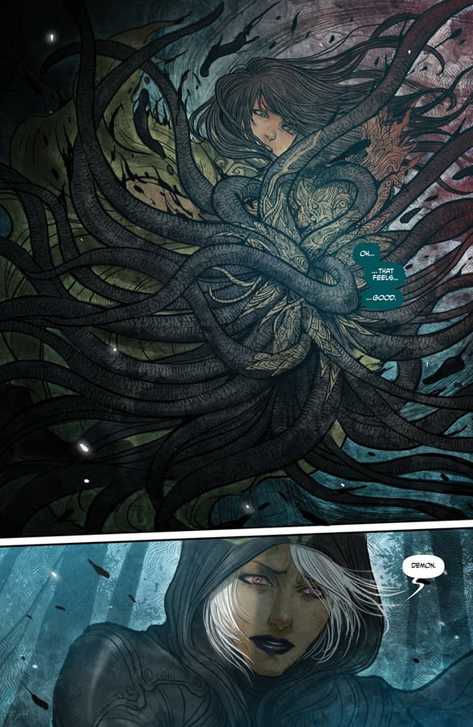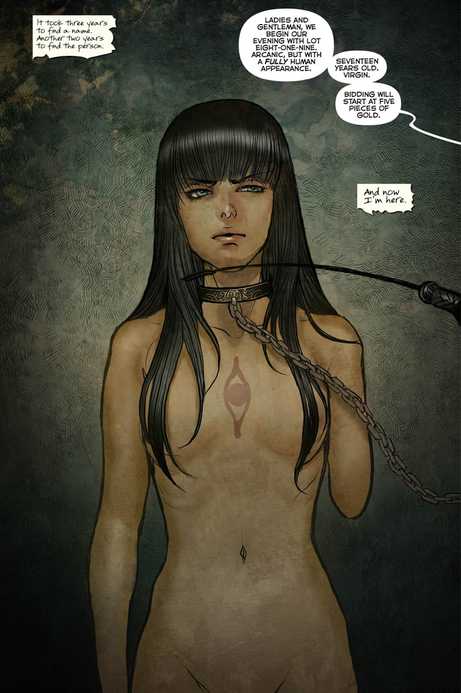|
I'll preface this by saying that I’m not embarrassed to admit that even over a month since Donald Trump’s election win, I still find myself reeling from the shock of it all. I don't cry, not anymore, but I wish I could. In hard times tears are their own sort of amnesty, and it is a strange thing to feel chained to your own body as a direct result of the bigotry of others, overcome by a strange fear: the fear, slow-crawling and inescapable, that every time I stand in a room full of white people I will experience a sudden bout of synaesthetic paranoia and hear that 58%, bleeding through the fraudulent concern in their voices. Blame it on our hopeless optimism, maybe even our naivete, but many people, particularly people of color and queer people and disabled people, genuinely believed that America would do the right thing. Make the right decision. We hoped, and though we were awestruck when the antithesis of that hope hit us like a double decker bus, we managed to right ourselves and keep walking, even when it meant we had to wander through the haze of anxiety and indecision for weeks. Quite a few people coped in the aftermath of the Trumpist tumult by doing what they always did: making brilliant, breathtaking art. But I’m also not embarrassed to admit that I couldn’t bring myself to be one of them. But, because I couldn’t write, I read. I devoured thinkpiece after ridiculous thinkpiece, and marvelled at the ability of my peers to counter the election’s unbridled bigotry with scathing critiques and brutal grace, and asked myself what it meant that my coming of age would be characterized by a presidency that had the potential to ruin my life as a queer Black person. There was no answer, obviously, and after a while, the half-assed lambastes of identity politics coming from the liberal left started wearing on my nerves; I suppose it was convenient enough that in my time of darkness, the book I picked up just so happened to be the Holy Grail. (content warning: mild nudity) The fear, slow-crawling and inescapable, that every time I stand in a room full of white people I will experience a sudden bout of synaesthetic paranoia and hear that 58%, bleeding through the fraudulent concern in their voices. Comic writer Marjorie Liu, one-half of the duo behind MONSTRESS Monstress is an Image Comics release that hit shelves in the summer of 2015. The lushly-drawn, murderous brainchild of author and comic novelist Marjorie Liu and Japanese illustrator Sana Takeda, its Art Deco-influenced artwork is as magnetizing as the very real history the comic’s storytelling is rooted in. Set in an alternate universe Asia in the 1900s, Monstress is a steampunk fantasy following the life of one Maika Halfwolf, a teenage girl hell-bent on rooting out the cause of her mother’s mysterious murder/disappearance and avenging it. Maika (alongside many of the series’ supporting characters) is an Arcanic, born of a race of creatures directly descended from the unholy union of humans and Ancients, the extremely powerful and extremely old gods that once populated the world. But she’s not like all the other Arcanics; her Rudolph-ism, however, has more to do with the unholy, hundred-eyed being of darkness and infernal hunger that she’s harboring in her severed arm. And to further complicate things? The war: an all-consuming conflict whose covert scorched-earth tactics have left the divide between the Federation of Man (among them the Cumaea, cloistered “witch-nuns” who brutally exploit the Arcanics for magical energy) and the Arcanic Empire to fester pitifully under the skin of civilians, soldiers, and slaves alike. I whole-heartedly believe that Monstress wouldn’t be half the comic it is if it wasn’t being written by a woman of color. So many of the protagonist’s anxieties ring true for me as a result of trauma, and it’s impossible to read through the series as a person of color without drawing parallels between the cruelty the Arcanics face at the hands of humans and the very-real treatment of people of color living under white supremacy. Bearing witness to Maika’s fears about her percieved monstrosity—and whether or not she herself could perpetuate it by being powerless to stop the beast for whom she functions as host—filled me with a bleak emptiness. Takeda’s silent panels do a horrifyingly excellent job in portraying the sterile beauty of their convent-slash-academy alongside the racist scientific practices of its inhabitants (in one scene, you are forced to watch a group of young Cumaea complain during the dissection an Arcanic slave, coolly and casually, as though he were an animal that had been put down and not a thinking, feeling creature.) Furthermore, all of the character interactions reek of paranoia. Quite a few dialogues between the Cumaea (who are at odds with Maika in part because of the war, but also for reasons that would be rude to spoil) are racially charged, and these same tensions, fueled by anxiety over the war and various intranational conflicts are even read among the partnerships that find themselves tenuously allied. Bearing witness to Maika’s fears about her percieved monstrosity—and whether or not she herself could perpetuate it by being powerless to stop the beast for whom she functions as host—filled me with a bleak emptiness. Monstress vol. 1 art by Sana Takeda Much like in Game of Thrones, Liu and Takeda don’t hesitate to kill off side characters to ramp up the tension, but the unique setting and casting of the comic allow them to escape the sexist pitfalls that befell the former. The female-to-male ratio of characters, for example, is roughly five to one. More important than the number of women you’ll find on the page, though, is the depth they are afforded. The protagonist, Maika, can be gentle in one panel and senselessly cruel in the next, but her reactions are perfectly understandable given a backstory that goes the extra mile to detail her time as a child-slave and the resulting psychological upheaval such an experience would cause. Characters whose morality lies in along a darker shade of gray are discomfitingly likeable for the assassins, witches, and racists that they are, and this is exhibited not through apologies for their bigotry, but in the interactions they have with characters that they actually view as worthy of life. While Liu’s portrayal of these morally-ambiguous characters means the comic is difficult to read at times (because it hits so close to home, never because it is anything less than a masterpiece), her decisions lend the comic a strength it would be without otherwise. This is, at its core, a story about revenge that is as hostile as it is necessary (which is to say: very), and it’s a story I would recommend to anyone. I re-read Monstress when I find myself obsessing over situations where I could have said something, done anything to make that microaggression sting less, when the future being broadcasted from my television screen is looking especially bleak and grainy. I re-read it for validation, vindication that my existence in a fantasy world as a trauma survivor, as a femme person of color, is not unimaginable but painful and bloody and good. For those of you tuning in from Out There and Elsewhere, it is December 30th here in America, and the world is on the cusp of a new year—one that will bring with it a number of challenges—but as far as i’m concerned, as long as we have escapist fantasy that openly acknowledges the struggles of nonwhite women, and disabled women, and queer women living under colonialist systems of power? This country, and the multiplicities of people in it, will probably be okay. Monstress vol. 1 art by Sana Takeda I re-read it for validation, vindication that my existence in a fantasy world as a trauma survivor and as a femme person of color, is not unimaginable, but painful and bloody and good. MINORITY REPORT: Monstress, given that the story is set in an alternate-universe Asia, is wonderfully diverse. Maika, her charming, fox-eared sidekick Kippa, and Tuya (who are arguably the most highlighted non-villain humanoids in the first volume) are all fairly brown, as are many of the side characters. Almost every character featured that isn't an animal is, in fact, nonwhite. RATING: 4.5 stars Lyrik Courtneyis the blog editor of TRACK//FOUR, and a high school senior who sits at the cultural intersection of African-American and nonbinary gender (ca. 1999). Their work has been featured in/is forthcoming in Blueshift Journal, Liminality Magazine, and Ninth Letter, as well as other places. The nature of their existence is oftentimes disorienting, but you can always find them tweeting at @lyrik_c.
0 Comments
Leave a Reply. |
The TRACK//FOUR Blog discusses all things literature and art, and celebrates the accomplishments of our contributors. Archives
July 2018
Categories |




 RSS Feed
RSS Feed
